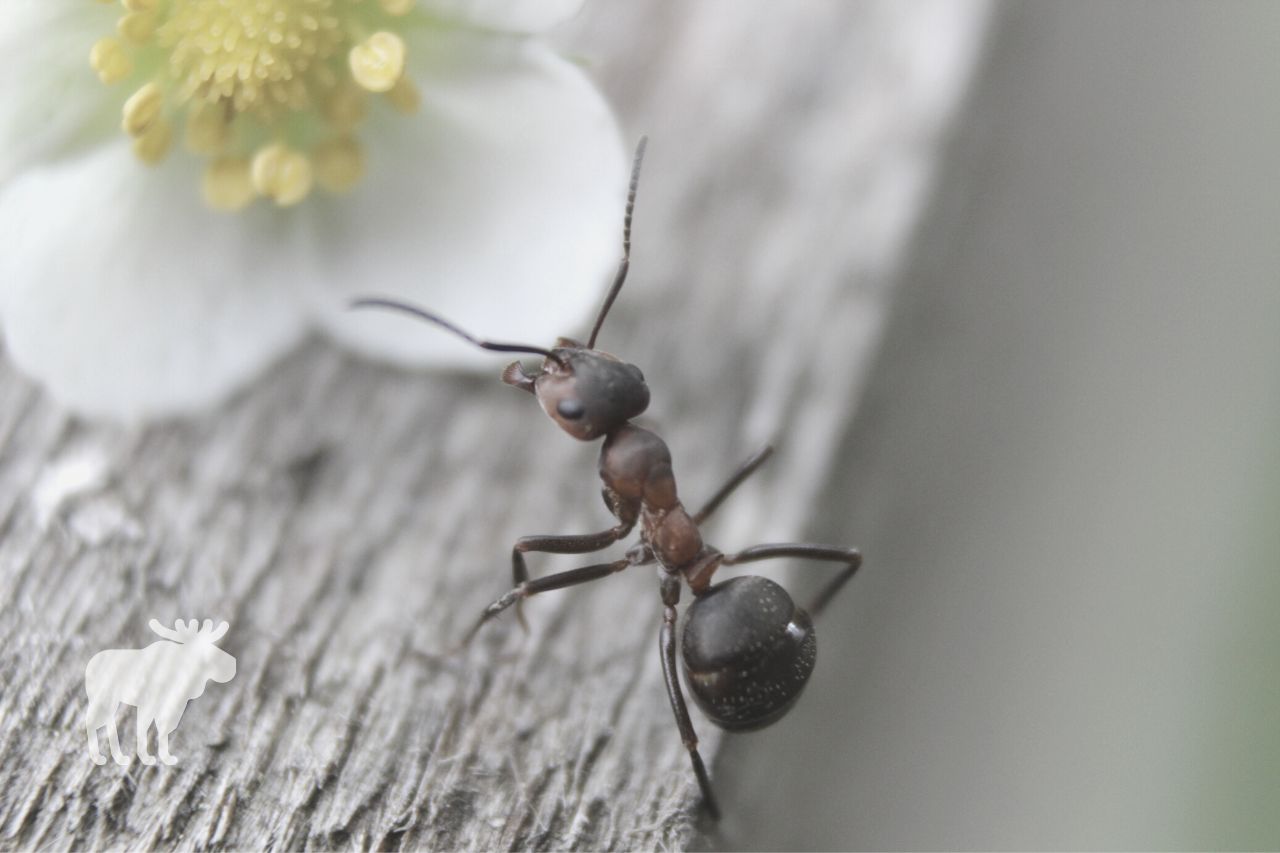Ants are a common sight throughout the world. You may have observed a group of ants working together to steal a cookie crumb or fight off other insects, and perhaps this led you to wonder about their intelligence. How smart are ants? Do they have brains and hearts? What about other internal organs? What is their anatomy like? Keep reading! In this article, we’ll explore the answers to these questions and more.
What You'll Learn Today
Do Ants Have Brains?

Ants are thought to be some of the smartest insects on the planet. Surely, their level of intelligence comes from having brains, right?
Yes, ants do have brains. And while they do possess some level of intelligence, they are far from being the smartest organisms out there.
Ants are extremely small, so the size of their brains is also quite small. The largest ant brains contain about 250,000 neurons, or nerve cells.
This may seem like a large number, but humans have about 86 billion neurons. So, our brains are about 344 million times larger than the brains of ants.
Again, though, part of this small brain size has to do with the fact that ants themselves are small. Despite their small brains, they still show a higher level of intelligence than many other types of invertebrates.
For example, ants have demonstrated an ability to remember things and to learn from past experience. They also know how to communicate with each other, work together to find food, collect and store food for future use, and fight off potential predators.
So, even though their brains may not compare with humans or other large mammals, they are still quite smart for creatures of their small size.
Do Ants Have Hearts?
Ants don’t exactly have hearts, but they do have a heart-like organ.
This organ is known as the dorsal vessel. It is a long, tube-like structure that extends from the ant’s head, through its thorax, and down through the end of its abdomen.
The dorsal vessel is divided into different chambers, and one-way valves between the chambers prevent the backflow of bodily fluids, forcing them to move in only one direction.
Muscles around the dorsal vessel contract to force the ant’s bodily fluids (known as hemolymph) through its tiny body.
An ant’s dorsal vessel can contract anywhere between 30 and 200 times per minute, depending on the weather and the ant’s level of activity. The pumping rate slows considerably during the cold winter months, but it can become very fast during periods of exertion when the weather is warm.
Check out this video to learn more about an ant’s heart and circulatory system:
Do Ants Have Blood and Blood Vessels?
As mentioned in the above section, ants don’t exactly have hearts; rather, they have a sort of “heart substitute”. The same is true of their blood.
Ants don’t exactly have blood; instead, they have a blood-like fluid known as hemolymph.
Hemolymph differs from human blood in that it does not contain red blood cells. It is made up of 90 percent plasma and 10 percent blood cells, or hemocytes.
Hemolymph is typically green or yellow in color, though it may also appear clear. It is responsible for transporting nutrients, waste products, and hormones throughout the body.
Interestingly, an ant’s hemolymph does not carry oxygen. Ants get all the oxygen they need through a series of tube-like pores called spiracles; thus, they don’t need their hemolymph to transport the oxygen to their organs.
So, you may also be wondering, how does an ant’s hemolymph travel throughout its body? Does it move through blood vessels?
Ants don’t have blood vessels. Instead, their hemolymph is free-flowing throughout their bodies, moving by way of muscle contractions.
When the dorsal vessel contracts, these contractions force the hemolymph to move throughout the ant’s body. The hemolymph then comes in direct contact with all of the ant’s internal organs.
This is known as an open circulatory system. It differs from a closed system (which humans have) in that bodily fluids flow freely inside the body cavities; they are not confined to veins and arteries.
Do Ants Have Internal Organs?

Ants do have various internal organs, but they are not all the same as the organs found in human bodies. Most of an ant’s organs have to do with sensory functions, respiration, digestion, and excretion.
An ant’s sensory organs include their eyes and antennae. Not all ants have eyes, and even those that can see perfectly use their antennae to “smell” their environment and gather information about their surroundings.
An ant’s respiratory organs include the tracheae and spiracles. They do not have lungs; instead, they breathe oxygen through the pore-like spiracles in their skin, and from there it flows into their tracheae, where oxygen passes into the body and carbon dioxide passes out.
An ant’s digestive system is simple but somewhat similar to that of a human’s. The ant eats food, which travels down its esophagus and is digested in its stomach.
From there, it moves onto the excretory organs: the malpighian tubules and the rectum. Any part of the ant’s food that it cannot use passes out of its body in the form of excretion known as “frass”.
Though not technically considered organs, ants have extremely dense muscles that make them incredibly strong for their size. Most ants can lift and move anywhere from 10 to 50 times their own weight.
Interestingly, ants don’t have ears or any organs for hearing. Instead of auditory canals to hear sounds, they have sensitive spots on their knees and feet that allow them to feel the vibrations of sound.
Conclusion
Ants do have brains. They also have heart-like structures that pump a blood-like liquid through their open circulatory systems.
Ants also have digestive systems, and many of them have eyes. They do not have lungs; instead, they breathe through pores in their body called spiracles.
They also don’t have ears. Instead of hearing, they sense vibrations in their environment.